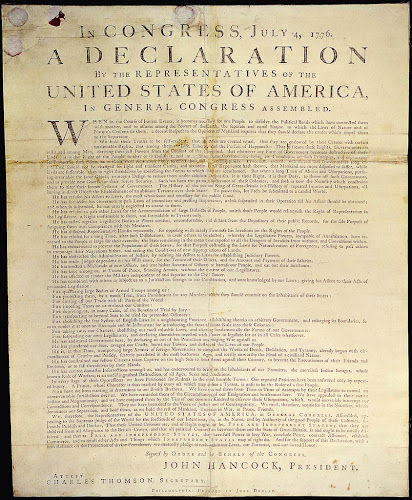The printing press may be one of the most neglected but vital inventions in history. Although first developed in China, the perfection of the printing press by Gutenberg in 1450 transformed western civilization. From the bible, to books, and newspapers, the printing press was in many was the Renaissance Age's version of the Internet. While newspapers tended to appeal to those with money and good reading skills, another common publication that was free and available to the poor was the broadside.
The best equivalent to the broadside can be found on college campuses. Walk the "quad" area of any public university and there's stuff posted everywhere. Most of them are advertisements for meetings, roommates wanted, used book sales, and upcoming courses, but a few are informative manifestos, political platforms, or backgrounders on various current issues. These college postings are much like colonial era broadsides. Some were advertisements but many were newsworthy pieces covering events of the day. Physically, the broadside was an oversized sheet of newsprint that focused on a single topic or was a reproduction of a government proclamation. The most famous broadsides were those that informed America about the Declaration of Independence.
(The famous Dunlap broadside of the DOI.)
These broadsides were posted in public places, and many towns and cities had special areas for that purpose. They were early versions of a university's "free speech area." Even small villages had an inn or tavern where the public congregated to read the latest broadsides posted outside the establishment. Even those who could not read demanded others read it to them. The civic dialogue did not stop there. People would discuss the latest news and events over a pint or two. Unlike today, a majority of the population saw it as a responsibility and duty to be informed and engaged in the democratic process.
Broadsides had a long lifespan. Appearing in the early 1600s, these posted announcements were the source of news for many until they began to fade away in the late 1800s. By then the affordability of newspapers, increase in literacy rates, and rise in worker wages ended the need for the broadside. They did not fade away though. The rise of the modern advertising industry resurrected the broadside as a means of communication, often promoting questionable products. But the glamour years of the broadside were over.



No comments:
Post a Comment